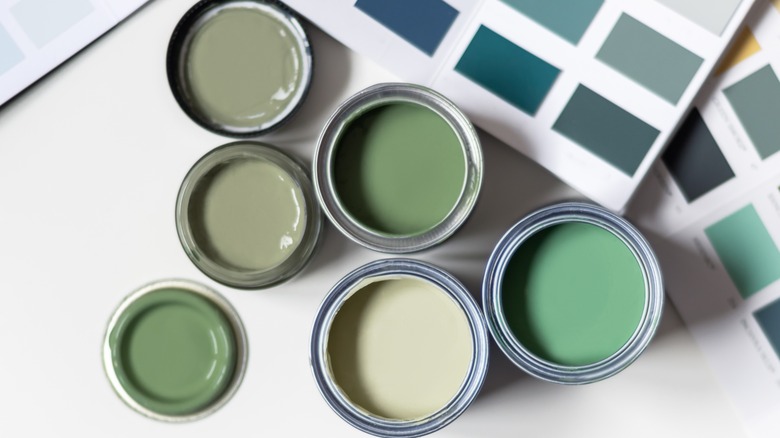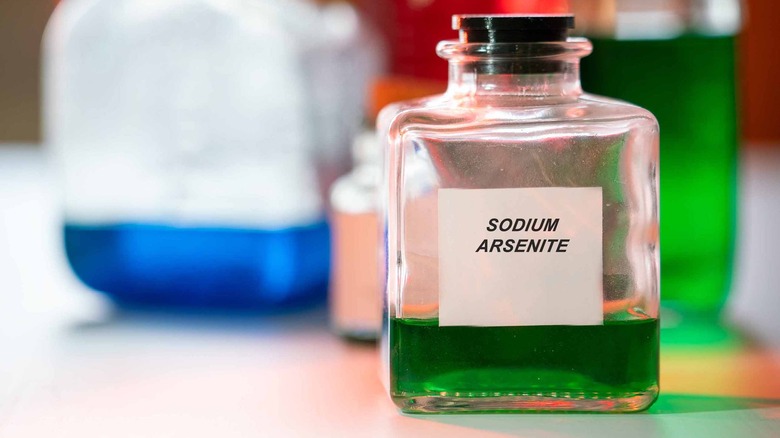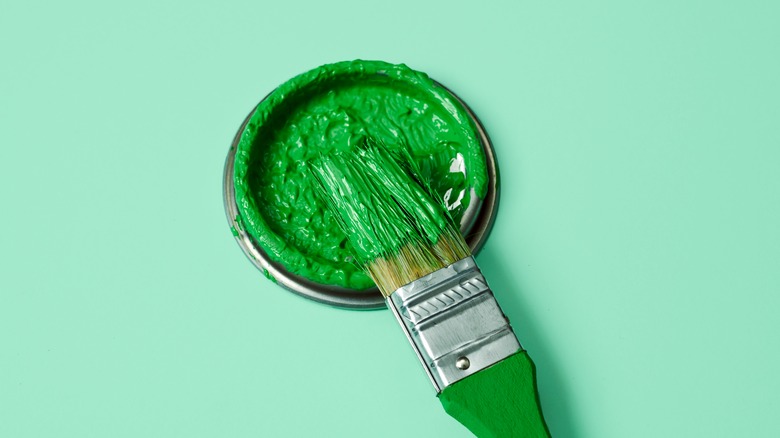Why Painting Your Room Green Is Considered Unlucky
Green is one of the trendiest and most versatile colors for decorating and designing a room. It is a neutral earth tone that possesses colorful hues, making it an excellent shade for any type of decorating style, including modern, minimalistic, eclectic, earthy, bold, and so on. Green is the color of nature and life, and adding it to any room will help liven it up.
Green also goes with a wide variety of colors both warm and cool. According to Hadley Court, adding green to a room can make it feel inspired, creative, tranquil, and intimate. There are plenty of ways to add green to a room, including a plethora of plants, décor, accent or statement pieces, and, of course, paint. That being said, there is a slight superstition around painting with the color green. While it may be a very favorable color for interior design, it hasn't always been so.
The dark history of Scheele's green
Before synthetic pigments were invented, anyone who used dye in their work had to come by them naturally. Some colors, like yellow, commonly found in nature, were readily available, and other pigments, like green, were much harder to come by. While there's plenty of green in nature, it isn't pigmented enough to produce a dye. In fact, early green stains came from oxidized copper called verdigris by the ancient Romans, per My Modern Met. In the 18th century, synthetic pigments started hitting the market, allowing rarer colors to become more mainstream and readily accessible. Green was no exception, and in 1775, the Swedish chemist Carl Wilhelm Scheele created the infamous paint color Scheele's green, via the Los Angeles Academy of Figurative Art.
The color became popular for how unique and easily accessible it was. Scheele's secret ingredient, though, was copper arsenite — a deadly chemical containing arsenic. Arsenite exposure led to many unpleasant symptoms, including vomiting, diarrhea, skin lesions, and cancer. This particular pigment is so notorious that it's rumored to have killed Napoleon Bonaparte. In 1815, Napoleon was sent away to spend the rest of his days in exile in St. Helena. He had his room painted with his favorite color — Scheele's green. It's believed that either paint chipped off the walls and was breathed in, or humidity on the island caused the toxins to become airborne. When Napoleon died, a post-mortem analysis showed high levels of arsenic in his system.
Psychological associations of the color green
As with most colors, green has both positive and negative psychological connotations attached to it. On the one hand, green is the color of nature and life. On the other hand, green became an infamous symbol of death after the fiasco that was Scheele's green. Interestingly, this duality existed long before green became deadly. According to BBC, green represented Osiris, the god of life and death.
As Oberlo points out, green positively represents fertility, renewal, and health. It also means wealth, which is both positive and negative. Negatively, it has connotations of greed and envy. Green has also become a symbol of poison and toxicity due to its notorious effects in the 18th century, an association that still lives on today, via Symbolism & Metaphor. Horror creatures like Frankenstein's monster and zombies have come to be symbolically linked with the color green, as have infamous supervillains.


